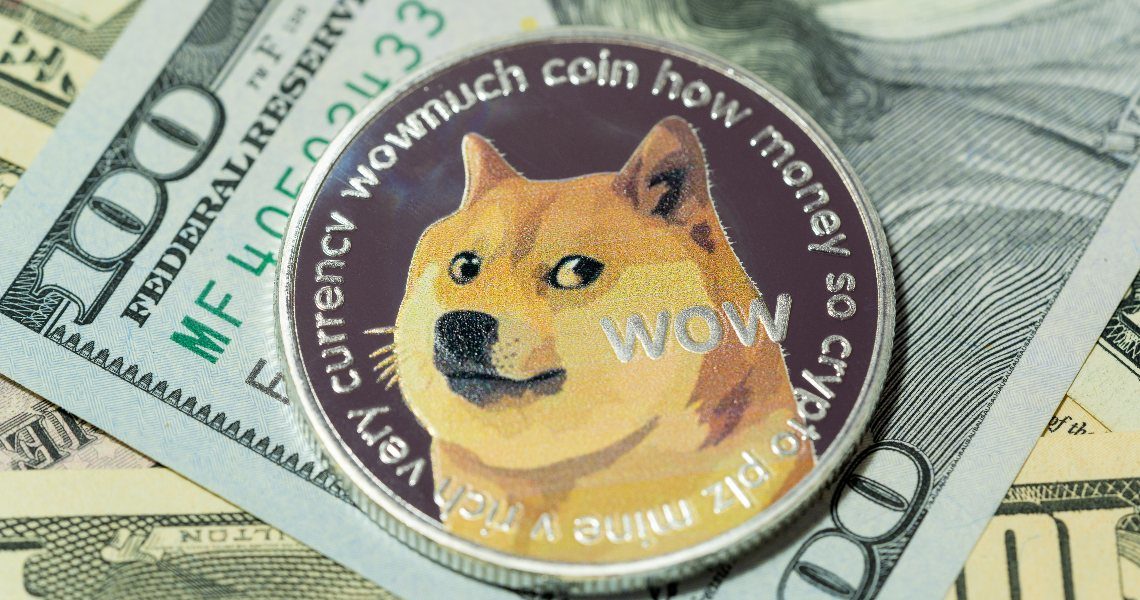Dogecoin Gains Popularity as Everyday Payment Method
08.07.2024 21:30 1 min. read Alexander Stefanov
Dogecoin has recently become a popular payment method for everyday consumers, appealing to both tech-savvy millennials and seasoned investors.
Originally created as a fun digital currency, Dogecoin’s value and utility have grown significantly, thanks to its simplicity and low transaction fees.
Its ease of use for purchasing goods and services has led many online and offline merchants to accept Dogecoin. Quick transaction times and minimal fees make it a preferred choice over traditional banking methods.
While many crypto projects chase gains, Dogecoin’s purpose is to be a simple means of exchange for everyday people. Shibes around the world are putting Doge to real use. https://t.co/xUgGDVbnFY
— Dogecoin (@dogecoin) July 8, 2024
Social media trends and celebrity endorsements, especially from Elon Musk, have boosted Dogecoin’s visibility and adoption. Its integration into popular online platforms and apps has also contributed to its rise.
Dogecoin’s community-driven ethos promotes charitable giving and crowdfunding, supporting disaster relief efforts and community projects worldwide. While critics warn of cryptocurrency volatility, proponents see Dogecoin’s growing acceptance in mainstream commerce as a sign of its potential as a viable payment option.
Looking ahead, Dogecoin’s future looks promising with ongoing developments and strategic partnerships enhancing its utility and stability. Its evolution from a meme-based novelty to a practical digital currency highlights its growing significance in the global financial landscape.
-
1
XRP Could Beat Solana to the ETF Finish Line, Analysts Say
12.06.2025 17:00 2 min. read -
2
Plasma’s ICO: A $500M Frenzy Sparks Fairness Debate
10.06.2025 22:00 2 min. read -
3
Bitcoin Holds Above $100K, But Analyst Sees Trouble Brewing
07.06.2025 17:00 1 min. read -
4
South Korea’s New President Pushes for Domestic Stablecoins
11.06.2025 16:00 2 min. read -
5
Ethereum Faces Heavy Sell-Off Amid Rising Geopolitical Tensions
13.06.2025 14:00 1 min. read
XRP Price Prediction: Can XRP Hit $4 After XRPL EVM Sidechain Launch?
XRP (XRP) has gone up by 1.2% in the past 24 hours but, behind that mild price increase, there has been a significant spike in trading volumes. During this period, $2.4 billion worth of XRP has exchanged hands, representing an 83% increase. Just hours ago, Ripple announced the official launch of its Ethereum-compatible sidechain called […]
Ethereum Launches Onchain Time Capsule to Mark 11th Anniversary in 2026
A community-driven initiative launched Monday is inviting Ethereum users to lock art, memories, and personal messages inside a decentralized “time capsule,” set to be opened on the network’s 11th anniversary next year.
Ethereum Accumulation Surges While U.S. Politics Stir Market Uncertainty
A new CryptoQuant report highlights a growing divergence between long-term Ethereum holders and short-term Bitcoin buyers, with significant accumulation behavior unfolding in both markets amid increasing political and economic tension in the U.S.
TRON (TRX) Eyes Breakout as Bollinger Bands Signal Squeeze
According to a new analysis from CryptoQuant, TRON (TRX) may be gearing up for a breakout as tightening Bollinger Bands point to an imminent expansion in volatility.
-
1
XRP Could Beat Solana to the ETF Finish Line, Analysts Say
12.06.2025 17:00 2 min. read -
2
Plasma’s ICO: A $500M Frenzy Sparks Fairness Debate
10.06.2025 22:00 2 min. read -
3
Bitcoin Holds Above $100K, But Analyst Sees Trouble Brewing
07.06.2025 17:00 1 min. read -
4
South Korea’s New President Pushes for Domestic Stablecoins
11.06.2025 16:00 2 min. read -
5
Ethereum Faces Heavy Sell-Off Amid Rising Geopolitical Tensions
13.06.2025 14:00 1 min. read


